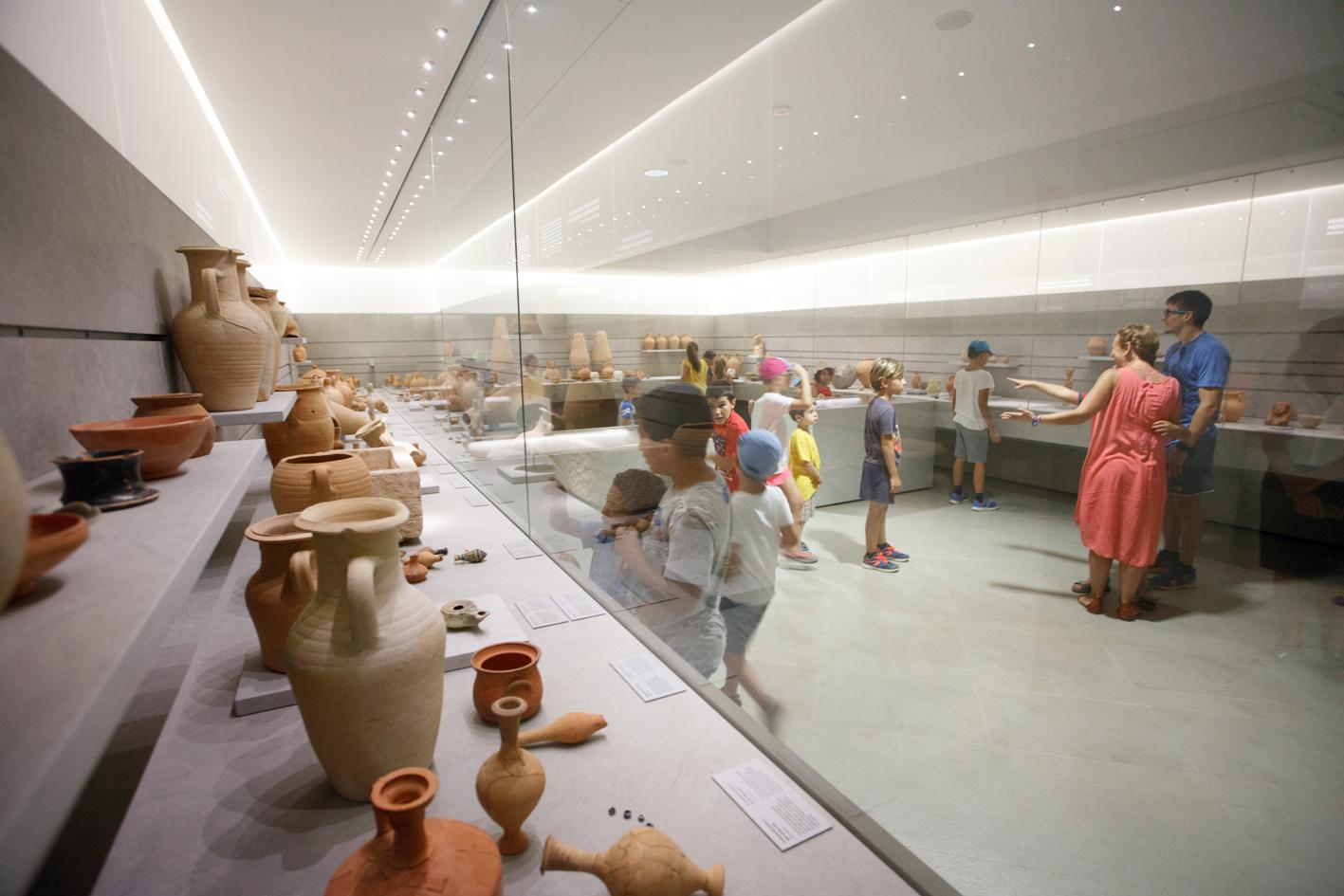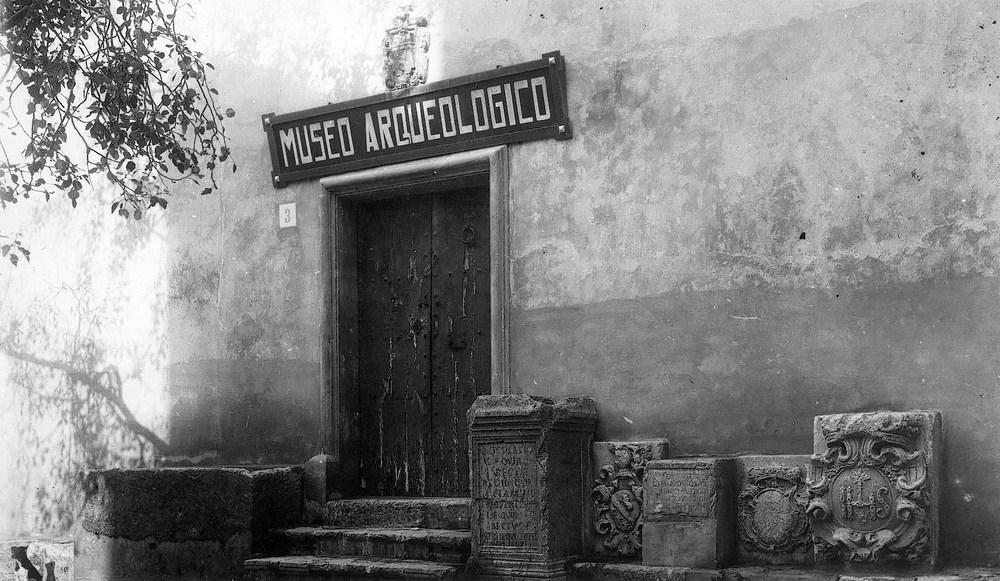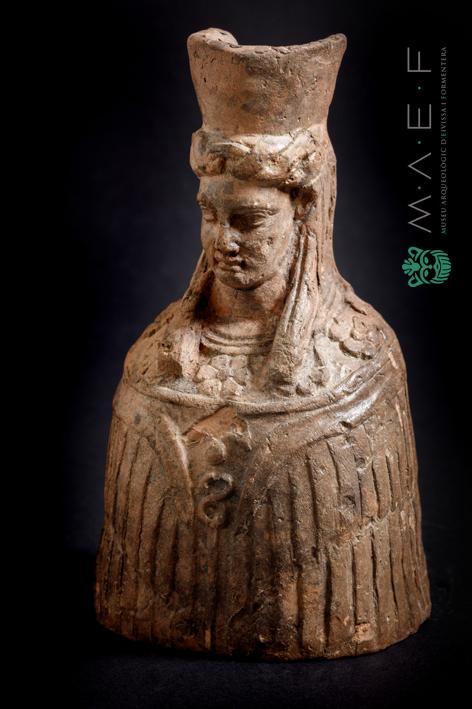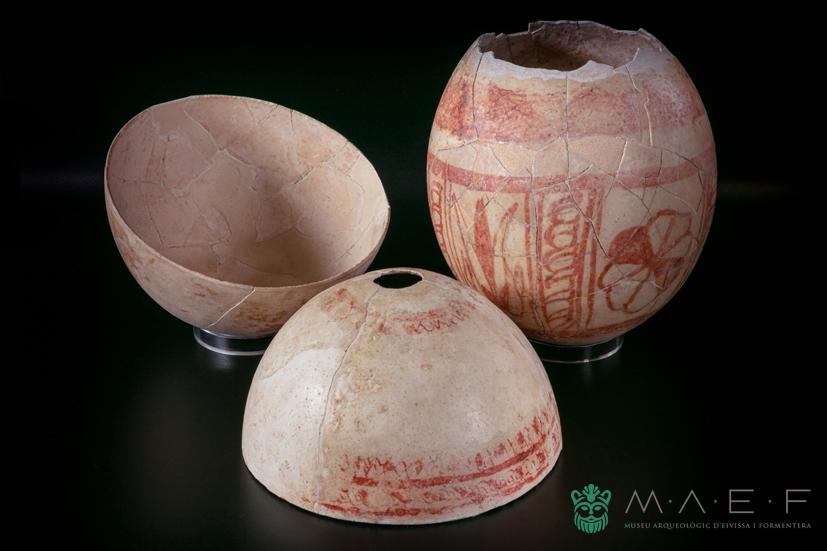The Archaeological Museum of Ibiza (‘and Formentera’ was added later, making its Catalan initials MAEF) was founded in 1907 thanks to the donation to the Spanish state of private collections of archaeological artefacts, recovered during various excavations carried out by the Ebusan Archaeological Society from 1903. Since its creation, the museum has led a host of excavation campaigns to investigate the history of the two islands, but always with a special focus on the legacy left behind by the Phoenician and Punic settlers.
Although it deals exclusively with a small area – the Pityusic Islands – the MAEF is made up of two museum centres: the Archaeological Museum of Dalt Vila, currently closed for renovations, which covers the history of Ibiza and Formentera from the prehistoric era to the Middle Ages, and the Puig des Molins Monographic Museum, where the necropolis of the ancient city of Ibiza is found. The latter centre includes a visit to 2,500-year-old underground tombs and offers temporary exhibitions on various themes. These paragraphs aim to explain why a single archaeological site has a monographic museum all to itself.

The MAEF’s collections bring together a series of exceptional pieces that make it an international reference point for Phoenician and Punic archaeology. The flagship for this exceptional ancient heritage is undoubtedly the Puig des Molins Necropolis. In the archaeological sphere, it is well known that funerary sites from any era often offer well preserved materials from the time, as tombs act like ‘time capsules’ sealed off and buried in the earth. This rich variety of grave goods, often preserved entirely intact, includes jewellery, luxury pottery, apotropaic pieces (amulets, masks, etc.), and much more. In this case, these items offer essential information on how the Phoenicians and Punics lived and dealt with death. Despite the Phoenicians’ eastern origins (their earliest metropolis was Tyre, located today in Lebanon), in the context of the Phoenician-Punic settlements in the Western Mediterranean, the Puig des Molins Necropolis in Ibiza is the best example of a necropolis from this culture. This is down to its size (over 5 hectares), its number of tombs (over 3,000 hypogea from the Punic era alone), and the richness and uniqueness of the grave goods found there.
Phoenician-Punic funeral rites were structured into a series of steps to prepare the deceased for their passage to the afterlife. The body was treated (purified, cleaned, enshrouded and dressed) and protected (by accompanying it with magical and religious items and reciting certain formulas) before the funeral procession, during which the body was transported from the domestic environment to the public necropolis. Attendees bid farewell to the deceased with crying and music until it was time to place them in their tomb, with the corresponding grave goods. This burial stage consisted of presenting the individual to the gods through a series of sacrificial acts to honour them.

The materials linked to the offerings of food and libations of liquids carried out during the funeral rites at Puig des Molins included high-quality pottery imported from other Mediterranean centres, such as Attic and Campanian pottery. Among the other unique objects with a clear symbolic function were the exotic polychrome ostrich egg shells that arrived in Ibiza from North Africa or from the area where Syria is found today and that became part of the rituals carried out in the tombs. The MAEF’s collection of over 50 whole ostrich eggs from the Punic period is only beaten in number by that of the Villaricos Necropolis in Almería. Our little island also stands out for its collection of scarabs, inspired by Egyptian tradition. The Phoenicians had close commercial and cultural ties with Ancient Egypt, which resulted in a proliferation of this type of amulet among the inhabitants of Phoenician-Punic settlements. They are known as scarabs as their rear face takes the form of the sacred scarab (Scarabaeus sacer). Around 300 scarabs have been recovered from Punic Ebusan (the name for the Punics from the ancient city of Ebusus, now Ibiza) sites, which is more than all the scarabs found in all the other contemporary sites on the Iberian Peninsula put together.

Puig des Molins was the cemetery for the city of Ibossim (Ibiza in Phoenician) and is therefore a well-preserved urban necropolis, despite the exponential growth of the modern city. It has its own monographic museum, which acts as a visitor centre for the site, an information centre and a museum that displays and disseminates the historical and artistic values of the materials provided by the necropolis. In addition, the MAEF displays exceptional materials from a host of rural necropolises, which highlight the importance of the island of Ibiza’s agriculture and animal husbandry activity (as well as its commercial and strategic significance) in the time of Hannibal Barca and Scipio Africanus. These cemeteries, spread out all over the island, were associated with the cases pageses (traditional Ibizan rural houses) of the period. In fact, in many cases, they have taken the name of the last cases pageses to have worked the Ibizan soil up to the twentieth century, such as Can Sorà (Ses Païsses de Cala d’Hort), Cas Frare Verd and Ca Na Jondala.
Exploring Phoenician-Punic Ibiza through the MAEF’s exhibits also sheds lights on the places of worship of a society in which superstition and religiousness permeated many aspects of day-to-day life. The Es Culleram Sanctuary, in the north of the island, was dedicated to the worship of the goddess Tanit, a Punic deity from Carthage whose name lives on today through various Ibizan businesses and girls born on the island. The sanctuary, discovered and excavated by the Ebusan Archaeological Society in 1907, is located in a natural cave. Around 600 terracotta figures, used as votive offerings dedicated to Tanit, were recovered from the site, constituting one of the largest collections of Punic Art from the third and second centuries BCE, and the most extensive collection of pieces representing this deity.

So many years of excavations and investigations into Ibiza’s Phoenician-Punic past contributed to the achievement of an unparalleled international recognition: the naming of Ibiza as a UNESCO World Heritage Site in 1999. The Phoenician settlement sites of Sa Caleta and the Puig des Molins Necropolis were chosen as the main representatives of this millennia-old culture that took root on the island from the seventh century BCE onwards. The impressive, Renaissance-era Dalt Vila fortifications and the acres of undersea posidonia meadows that connect Ibiza and Formentera (the biggest living being in the world!) are the other elements of the mixed heritage site ‘Ibiza. Biodiversity and Culture’.
Finally, it must be noted that the scientific research process is not finished until its results reach the public through exhibitions (like the virtual tour on the MAEF website), publications, courses and activities of all kinds that facilitate this knowledge transfer. With a view to disseminating the research being carried out in this area, for thirty years now, the MAEF has been holding an annual Phoenician-Punic Archaeology Conference and publishing its findings in book format. This academic event is attended by representatives of institutions and universities from all over who dedicate their research to the Phoenician-Punic world, and it aims to present society (now also through the MAEF’s YouTube channel and social media accounts) with the progress being made in research in the field. All in all, a wealth of unique archaeological heritage is just waiting to be discovered through a visit to the MAEF.












